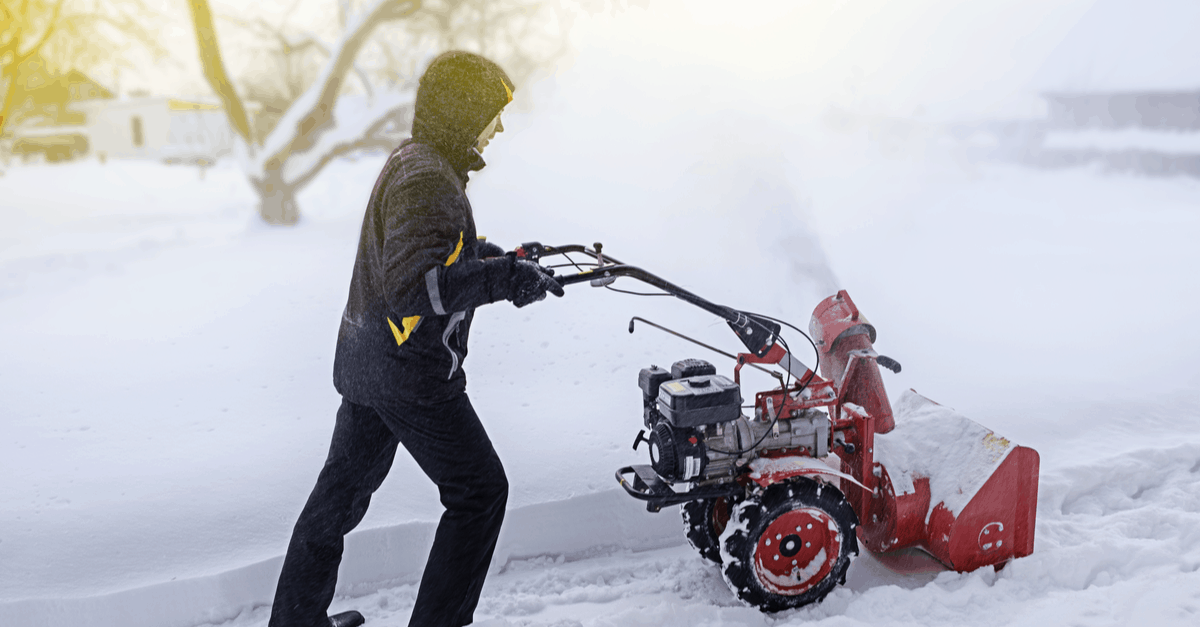Do you live in a place that is hit by multiple snowstorms a season, or do you just get away without facing any?
Depending on the climate and geography of your area, a snowblower can either be a basic amenity or a luxury. If you face the winter season in its full flair and live in a large home, then you definitely need it, and a big one at that.
Winters in Texas aren’t that chilly, and the snow stays mostly under control, so for me, a snowblower isn’t a necessity. Yet, I invested in one after last winter because you can never be too sure considering the climate changes.
Based on my experience, I have put together this brief guide that will help you choose a suitable model for your needs. If you’ve been wondering, “Hmph! What size snowblower do I need?” then keep on reading to find all the answers.
Hi! It’s Stacy Smith, your gardening enthusiast and master tinkerer, and let’s dive into this tinkering topic.
Knowing The Sizes
Snowblowers are available in various models and types but can be grouped into three major categories depending on their size. What are these categories? Let’s get to know them in detail.
1. Single-Stage Snowblowers
Single-stage snowblowers have a single auger that scoops the snow and disposes it off only once at a time, as is evident by the name. This type is typically eighteen to twenty inches wide and can efficiently handle eight to twelve inches of snowfall.
They are lightweight and the easiest to handle, perfect for suburban areas that experience light to moderate snow. On the occasions of heavy snowfall or snowstorms, you might need to use it more than once, but considering the price range, the extra effort is worth it.
One preventive measure to keep in mind while using it is to avoid stony or gravelly grounds. The auger paddles stay in contact with the surface while being operated, which might damage the driveway or injure people around you. So, make sure that you are following all the safety guidelines while using it.
Its only limiting factor is the height, and I found that this makes it slightly tiresome to handle. Additionally, if the snowfall in your corner of the world frequently surpasses the twelve inches mark, then this unit won’t prove much good. However, it’s suitable for snowy situations below that level.
Pros
Cons
2. Double-Stage Snow Blowers
The wider, sturdier, and heavier-built double-stage snow blowers are ideal for clearing deep and large snowy expanses. They outperform the previous category with a characteristic difference of propelling out the snow twice.
Capable of clearing more than eighteen inches, this type has a metallic auger that scoops up the stagnant ice and snow. A high-speed impeller then throws the snow in a discharge chute to keep the intake bucket from clogging.
The best part is that the augers in these models do not come in contact with the ground. Therefore there’s no scope of damaging the concrete or graveled floor and can be used on all types of surfaces.
If you live in a relatively heavy snowing area and receive more than eighteen inches of snow, then you should invest in a two-stage snow thrower. In my opinion, Ariens Platinum 30 is superb in this category, thanks to its scratch and dents-free design.
Now, the broad body and power output are the highlights of this type, and it can be further modified using accessories. What’s more, it is equipped with large buckets that can clear snow heaps and drifts that pile up in the driveway.
Pros
Cons

3. Three-Stage Snow Blowers
The most efficient and powerful blowers not just on our list but also on the market are the three-stage ones. Unlike the previous two categories, these models have two metal augers for snow removal.
After scooping the snow, they shift it towards the central section of the unit, which has an accelerator installed. This accelerator shaves the ice and passes it on to the impeller that eventually ejects it out through the chute. The crushed snow is launched at a very high speed and lands at least fifty feet away, which means you won’t have to deal with any heaps.
I take pride in doing tough jobs, but this doesn’t even qualify as tough. If I have to be honest with you, I’ll say it’s a child’s play to clear snow with this one. The blower is not just swift but comfortable too, and you can simplify the whole process further by adding a few accessory gears.
Moreover, its heated grip, one-touch chute control, and self-propelled wheels are a few features I found really impressive, among others. You can say goodbye to backaches induced by long hours of shoveling by investing a few dollars in three-stage snow blowers.
It is a tremendous task to clear twenty inches of snow manually, and it’s a waste to rush to blowing services every time. So, you ought to have a three-stage snowblower to deal with frequent blizzards.
Pros
Cons
Verdict
Well, now that I have imparted all my knowledge about snowblowers, I’ll take a back seat and let you mull over all that information.
But to brush up a little, keep these key points in mind: one-stage blowers are for clearing up to 12 inches of snow. While two-stage units can clear 18 inches, and three-stage models can clear more than 20 inches of snow.
I hope you’re feeling more confident about selecting a snowblower in an appropriate size, so I’ll be signing off now. Take care, bye!
